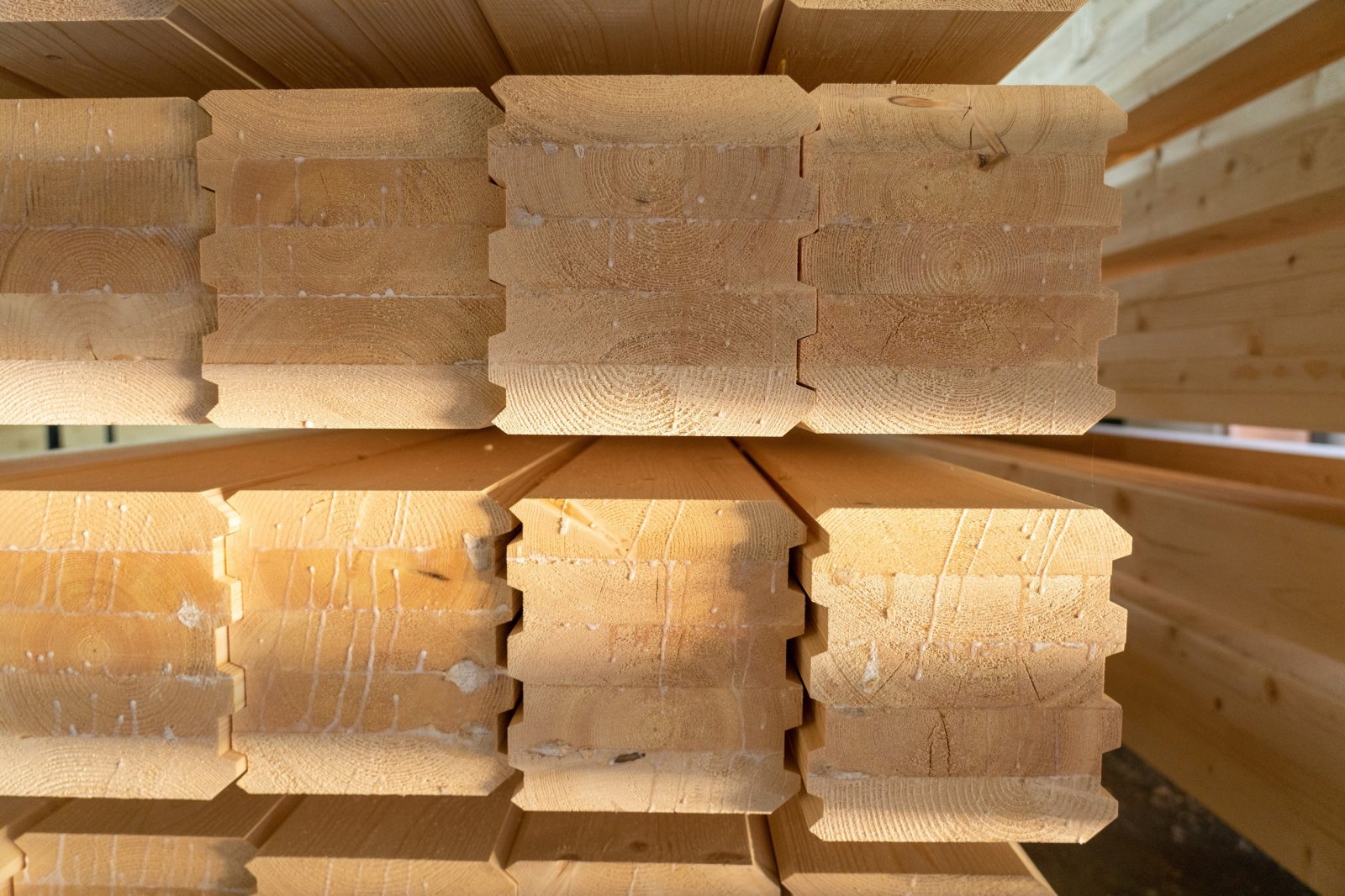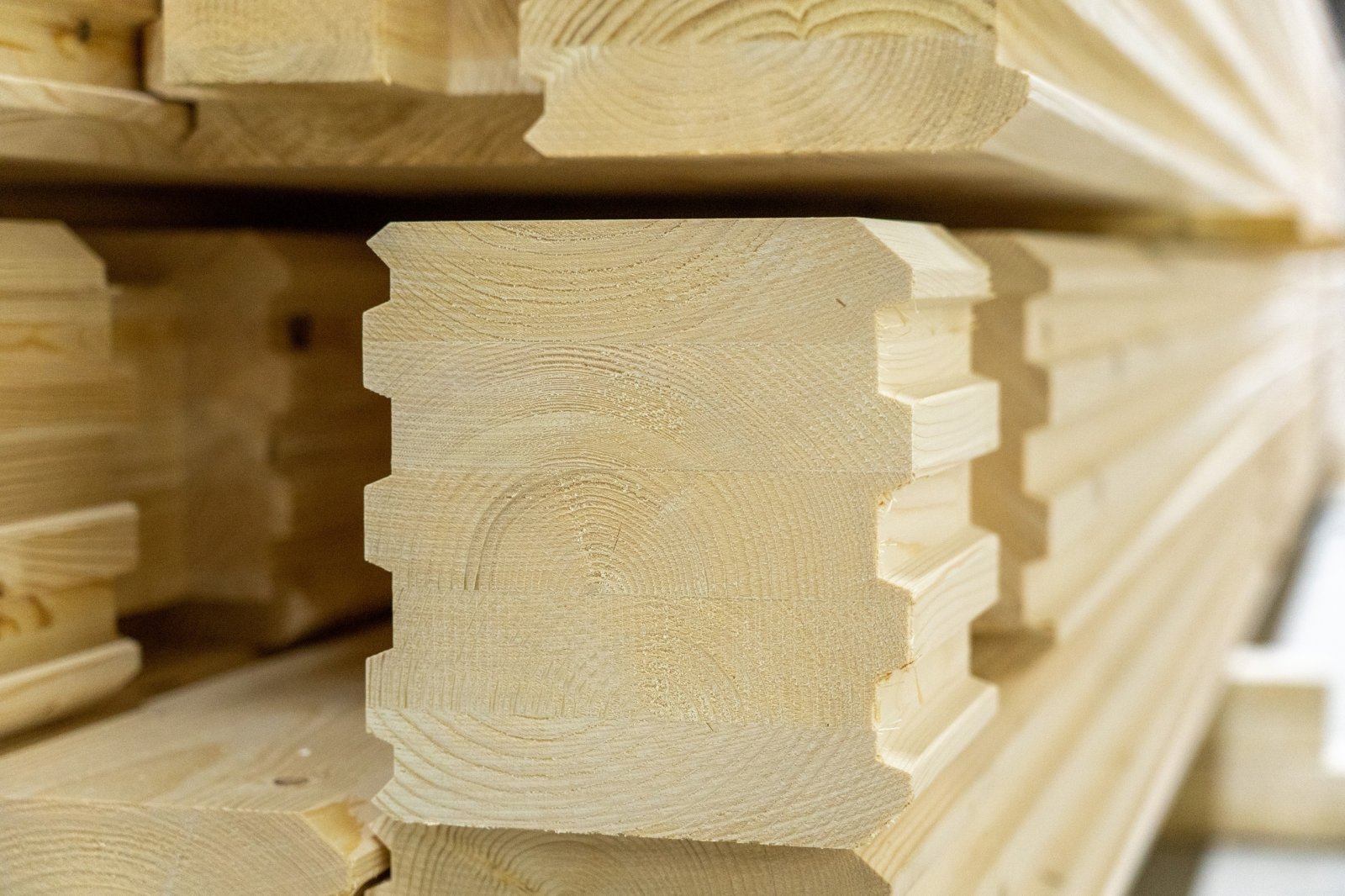Useful Information
3 december 2022 at 11:23
Fire safety in a house made of glued laminated timber
Wood has always been one of the best building materials. However, along with a huge number of positive qualities, there was also a significant drawback – it was believed that wooden houses were more at risk of fire than others. In reality, this is not the case – wood has a good level of fire resistance. When exposed to fire, it chars, but ignites with difficulty, and with an increase in the cross section, the degree of flammability of structures decreases. And such a building material as glued laminated timber has one of the best fire resistance indicators. Moreover, when treated with modern flame retardant impregnations, wood completely turns into a practically non-combustible material.
Fire resistance is one of the important advantages of a house made of glued laminated timber
The high fire safety of houses made of glued laminated timber is evidenced not only by the statements of specialists and scientists, but also by statistical data. All fears about the fire hazard of wooden houses are groundless – in fact, such construction projects are safer than buildings made of non-combustible materials. Being, in fact, compressed wood, glued beams are characterized by slow charring and strong bearing capacity. There are no cracks in the glued lumber material, due to which oxygen does not penetrate into the material itself, which makes it non-flammable. In the event of a fire, the wall assembled from this material first smolders to the ground, and then it burns out. In addition, due to a completely environmentally friendly composition, when burning, glued laminated timber does not emit toxins that are hazardous to health.
Fire hazard of other building materials
The fire resistance of a building directly depends on the material from which the house is built. In this case, the role is played not so much by the ability of the material to ignite, but by the resistance of the structure to collapse. The longer a building stands idle during a fire, the more likely it is to be saved. Metal and reinforced concrete structures, although they are made of non-combustible materials, can collapse after 20 minutes of fire. This is due to the fluidity of the metal, its tendency to thermal deformation and loss of up to 80% of strength under the influence of fire. Indeed, even after the complete localization of the fire, there is no guarantee that the structure is safe – the metal retains heat for a long time, so there is a possibility that the building is deformed some time after the fire is extinguished. The fire hazard of structures built of concrete, stone or brick is also high. The bearing capacity of such buildings is significantly reduced under thermal influence, and when water enters such a building material, it swells, the surface layers are destroyed, and fire quickly penetrates the building. In addition, under the influence of high temperatures, brick, plaster and concrete release substances that, when inhaled, harm human health and create a danger to life. Even if you manage to escape the fire, your lungs will be seriously damaged.
Fire-fighting treatment of houses from glued laminated timber with flame retardants
High-quality flame retardants (substances that prevent the combustion process) are well suited to protect glued laminated timber from fire. They are applied to the surface of glued beams or used for impregnation. Processing is carried out using a brush or sprayer. In production, high-quality glued laminated timber is always treated with fire retardants before being packed and sent to the construction site. The compositions may differ from each other depending on the principle of action. Active flame retardants are aimed at combating combustion and slowing down the smoldering process. They directly affect the course of the ignition reaction. Inert flame retardants create a protective layer on the surface of the wood, which increases the fire resistance of the material. Flame retardants also vary in composition, but it is better to give preference to environmentally friendly substances that do not release toxins into the air. As a result of coating the walls of a building made of glued laminated timber with flame retardants, the upper layers of the material are modified, reducing the combustibility of the entire structure. Coming into contact with such main substances of wood as cellulose and lignin, fire retardants provide the material with low flammability. As a result, glued building material is endowed with many times greater fire resistance.
What is the best way to impregnate glued beams with flame retardant
Flame retardants can be applied to the outer surface, as well as used as an impregnation or as an integral part of the building material itself. Ideal if the lamellas were processed before they were glued.
Flame retardants can be applied with a roller and brush, and this material can also be sprayed or dipped in impregnation with fire retardant properties. When protective compositions are applied to the surface of the glued beam, it is more profitable in terms of costs. But at the same time, the impregnation does not penetrate into the thickness of the building material.
For deeper penetration, they resort to the use of more complex methods of impregnation. So, glued laminated timber is immersed in a special mixture, where it is soaked, alternately being in a hot or cold bath – special autoclaves are used in the process. The use of such impregnation methods guarantees the achievement of the desired result: your home will be fully protected from fire.
Fire-fighting finishing materials
Special finishing materials are also successfully used to enhance the fire safety of buildings made of glued laminated timber, in particular:
- fire-fighting varnishes – when applied to surfaces, a thin, almost invisible film is formed. It helps to preserve and emphasize the natural beauty of wood, and also provides its protection from fire and the influence of atmospheric factors;
- special paints and enamels – such materials are of 2 types. Some of them form a decorative layer that prevents the wood from igniting and the spread of fire. Other protective materials act as a fire extinguisher – they instantly foam and form a heat-resistant protective layer.
A competent combination of such materials can significantly increase the fire safety of houses made of glued laminated timber and at the same time enhance their aesthetics and provide reliable protection from harmful influences.
REMEMBER!!!
Houses made of glued laminated timber are considered to be one of the most fireproof building structures. Due to the unique technical properties, the material smolders slowly when ignited, and the building structure does not collapse, allowing both residents and property to be saved in the event of a fire. The protection of the building from fire is calculated at the design stage of the house, and the material itself is processed with refractory compounds in production.





